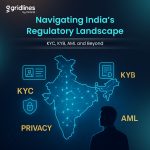In today’s digital economy, onboarding is no longer a UX checkpoint.
It is the first operational moment of truth—the point at which a user decides whether a business is reliable, secure, and worth engaging with.
A slow or unclear onboarding flow does more than cause drop-offs.
It signals operational inefficiency, weak governance, and a fragmented approach to identity and risk.
Conversely, a seamless onboarding journey communicates the opposite:
readiness, competence, and trustworthiness.
This is the standard modern businesses are now expected to meet.
Why Onboarding Standards Are Shifting
Across financial services, e-commerce, mobility, and workforce marketplaces, user expectations are being reset by platforms that deliver near-instant access with uncompromising security.
Three forces are driving this shift:
1. Expectation of Immediate Access
Users now benchmark all experiences against the fastest, most intuitive ones they encounter.
Any delay—however minor—is interpreted as friction.
2. Rising Sophistication of Fraud
Deepfakes, AI-generated identities, manipulated documents, and coordinated fraud networks have become mainstream.
Businesses can no longer rely on manual reviews or fragmented verification tools.
3. Heightened Regulatory Accountability
KYC and AML frameworks are evolving across jurisdictions.
Companies must comply not only with local regulations but also with emerging global standards.
To meet these expectations at scale, onboarding must be frictionless, secure, and compliant by design.
The Operational Realities Businesses Face
Despite significant investment in onboarding, most organisations struggle with challenges that sit beneath the surface:
• Fragmented Verification Stacks
Multiple vendors, inconsistent data formats, and disjointed workflows slow down onboarding and increase risk exposure.
• Manual Intervention at Critical Stages
Human review—especially for identity verification—creates delays and inconsistent decision-making.
• Inability to Detect Modern Fraud
Traditional checks do not detect synthetic identities, tampered documents, or impersonation attacks.
• Unclear Risk Signals
Risk-related flags often arrive late, after the user has already entered the ecosystem.
The result is a compromise: either a slower onboarding process or a faster one with higher exposure to fraud and compliance issues.
Neither is acceptable in 2025.
Where Gridlines Redefines the Standard
Gridlines provides a unified, high-trust digital onboarding solution that integrates identity checks, data verification, and risk signals into a single, API-driven framework.
It is designed not merely to onboard users—but to establish trust from the very first interaction.

1. AI-Driven Identity & Document Verification
Gridlines uses advanced models to detect manipulation, synthetic identities, and deepfake attempts, ensuring high-accuracy verification at scale.
2. Unified KYC & Risk Screening
PAN, Voter ID, DL, Passport, bank account verification, UPI match, and AML compliance checks operate within one orchestration layer.
3. Real-Time Fraud Intelligence
Automated signals identify discrepancies, mismatched identity attributes, forged documents, and behavioral anomalies in milliseconds.
4. Enterprise-Grade Integration
Gridlines APIs plug into existing onboarding workflows with minimal engineering overhead, supporting high throughput, global expansion, and multi-platform deployment.
5. Governance & Compliance by Design
Built on stringent data protection, encryption, and audit controls, with adherence to ISO27001:2022 and globally recognized security frameworks.
The Outcome: Confidence at the First Touchpoint
A refined onboarding process does more than improve conversion metrics.
It elevates the entire trust architecture of a business.
With Gridlines, organisations achieve:
• Accelerated User Activation
Instant verification reduces abandonment and shortens the distance between intent and value.
• Lower Fraud Losses
AI-driven verification and risk analytics detect threats earlier, preventing downstream exposure.
• Stronger Regulatory Alignment
Consistent adherence to KYC/AML mandates across geographies.
• Higher Customer Lifetime Value
Users who experience smooth, secure onboarding engage faster and stay longer.
Why Onboarding Is Now a Board-Level Priority
Executives across industries are recognising that onboarding is no longer a front-end function.
It sits at the intersection of:
- Risk Management
- Regulatory Compliance
- Customer Experience
- Revenue Growth
- Operational Efficiency
This makes onboarding a strategic differentiator—and a core component of digital trust infrastructure.
The Bottom Line
A seamless onboarding experience is not just a process improvement.
It is an enterprise capability—one that reflects how seriously a business treats security, compliance, user experience, and operational excellence.
With Gridlines’ digital onboarding solution, organisations gain an onboarding backbone engineered for scale, accelerated trust, and resilience in a rapidly evolving risk landscape.




Leave a Reply